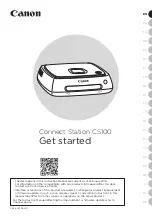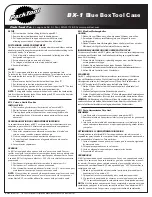
Rev. 1.00
144
September 11, 2018
Rev. 1.00
145
September 11, 2018
HT45F4050
A/D NFC Flash MCU
HT45F4050
A/D NFC Flash MCU
Bit 4
Unimplemented, read as "0"
Bit 3~2
SIMDEB1~SIMDEB0
: I
2
C debounce
t
ime selection
00: No debounce
01: 2 system clock debounce
1x: 4 system clock debounce
These bits are used to select the I
2
C debounce time when the SIM is configured as the
I
2
C interface function by setting the SIM2~SIM0 bits to "110".
Bit 1
SIMEN
: SIM
enable c
ontrol
0: Disable
1: Enable
The bit is the overall on/off control for the SIM interface. When the SIMEN bit is
cleared to zero to disable the SIM interface, the SDI, SDO, SCK and SCS, or SDA and
SCL lines will lose their SPI or I
2
C function and the SIM operating current will be
reduced to a minimum value. When the bit is high the SIM interface is enabled. If the
SIM is configured to operate as an SPI interface via the SIM2~SIM0 bits, the contents
of the SPI control registers will remain at the previous settings when the SIMEN bit
changes from low to high and should therefore be first initialised by the application
program. If the SIM is configured to operate as an I
2
C interface via the SIM2~SIM0
bits and the SIMEN bit changes from low to high, the contents of the I
2
C control bits
such as HTX and TXAK will remain at the previous settings and should therefore be
first initialised by the application program while the relevant I
2
C flags such as HCF,
HAAS, HBB, SRW and RXAK will be set to their default states.
Bit 0
SIMICF
: SIM SPI i
ncomplete
flag
This bit is only available when the SIM is configured to operate in an SPI slave mode.
Refer to the SPI register section.
• SIMC1 Register
Bit
7
6
5
4
3
2
1
0
Name
HCF
HAAS
HBB
HTX
TXAK
SRW
IAMWU
RXAK
R/W
R
R
R
R/W
R/W
R
R/W
R
POR
1
0
0
0
0
0
0
1
Bit 7
HCF
: I
2
C Bus data transfer completion flag
0: Data is being transferred
1: Completion of an 8-bit data transfer
The HCF flag is the data transfer flag. This flag will be zero when data is being
transferred. Upon completion of an 8-bit data transfer the flag will go high and an
interrupt will be generated.
Bit 6
HAAS
: I
2
C Bus address match flag
0: Not address match
1: Address match
The HAAS flag is the address match flag. This flag is used to determine if the slave
device address is the same as the master transmit address. If the addresses match then
this bit will be high, if there is no match then the flag will be low.
Bit 5
HBB
: I
2
C Bus busy flag
0: I
2
C Bus is not busy
1: I
2
C Bus is busy
The HBB flag is the I
2
C busy flag. This flag will be "1" when the I
2
C bus is busy which
will occur when a START signal is detected. The flag will be set to "0" when the bus is
free which will occur when a STOP signal is detected.
Bit 4
HTX
: I
2
C slave device is transmitter or receiver selection
0: Slave device is the receiver
1: Slave device is the transmitter
















































